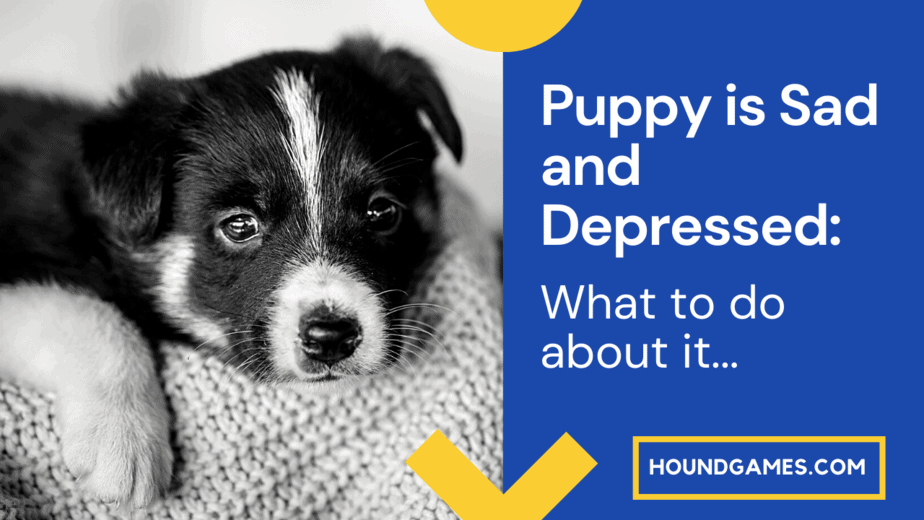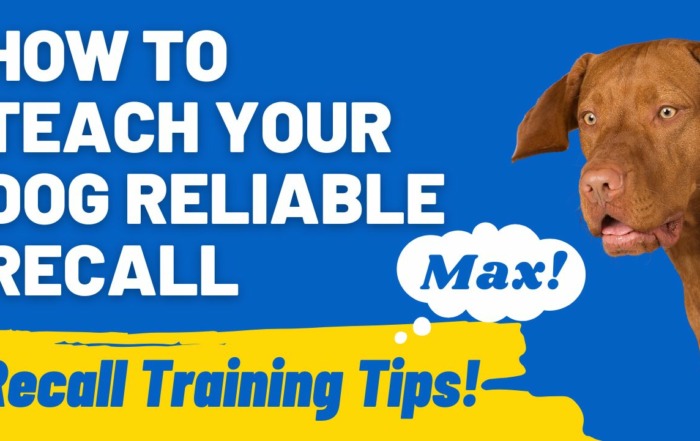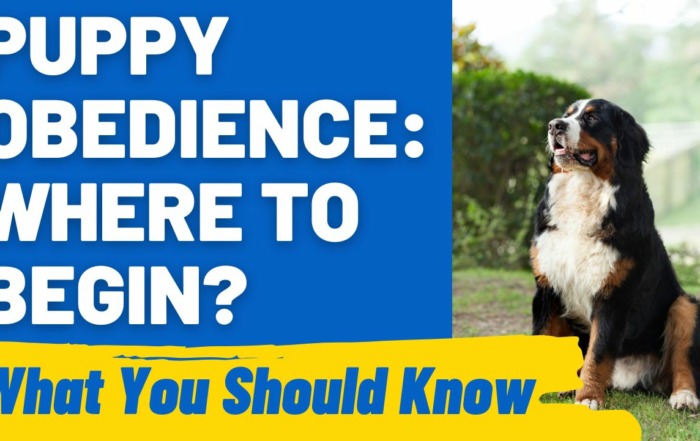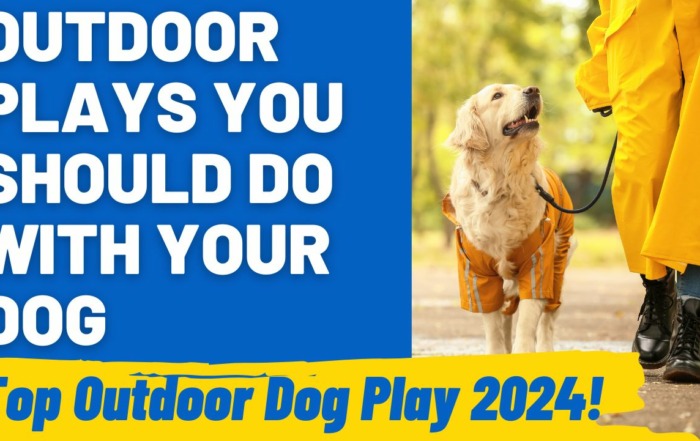Bringing home a new puppy is an exciting time for their new owners, and hopefully for the puppy as well. However, there are times when a puppy doesn’t handle the transition to their new home very well, and they may end up feeling sad, depressed, and lonely.
Knowing the signs that your puppy may be depressed, along with the reasons why they’re feeling that way, can help you to comfort your puppy and ensure they can become happy and healthy.
Is my puppy depressed?
At one time, many people wouldn’t have considered that a puppy could feel depressed. However, we’ve come to understand that dogs have a much wider range of emotions and feelings than originally thought.
Depression in dogs may not be the exact same as depression in people, but the general feeling of sadness and feeling down can still exist.
We can’t ask a dog about their feelings to determine exactly what depression feels like to dogs, but veterinarians have definitely noticed times when it appears to be the only explanation for a dog’s behavior.
When a puppy is depressed, they often display the following behavior:
- They become withdrawn, with little enthusiasm
- They often appear lethargic and sleep more than usual
- They may avoid eating or eat very little
- They can be restless and not be able to settle
- They don’t enjoy participating in activities they once enjoyed
Unfortunately, a lot of these same symptoms can simply indicate that your puppy is sick and feeling unwell.
Depression can definitely be the cause, but so can having a parasitic infection or other disease or illness.
It can also be difficult to tell if your puppy is depressed because you haven’t known your puppy very long to know what is normal for their behavior.
If these behaviors and symptoms persist, it’s worth a veterinary visit to rule out anything medical before assuming your puppy is sad or depressed.
One thing to note, is to observe your puppy’s behavior when you leave them on their own. Do they cry, whine, and tremble, or lick themselves? These are some of the signs of separation anxiety and we have a complete guide on this issue here.
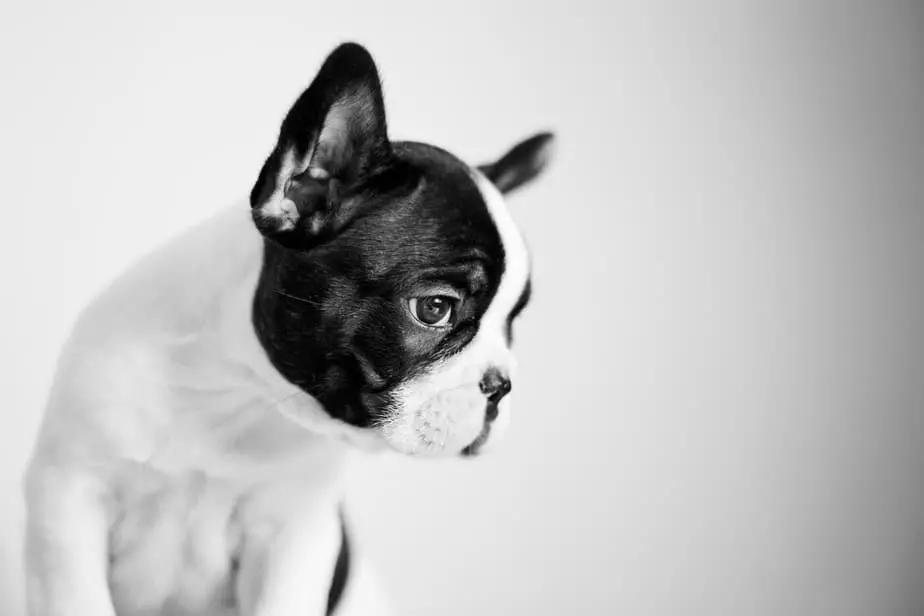
When your puppy is depressed after leaving litter
Leaving a litter can be a traumatic event for a puppy, especially if they’ve never spent any time away from their littermates. A responsible breeder will likely have started to teach your puppy to sleep alone in their kennel or to enjoy time away from their litter, but not all puppies have that advantage.
It’s normal for your puppy to act depressed, sad, and worried for a day or two after bringing them home in some cases. However, you should quickly see improvements as you bond with your puppy and they become more comfortable in their new home.
You can ease their transition and avoid feelings of depression by bringing home a blanket that smells like their litter and mother. There are also stuffed animals designed with heating packs and heartbeat sounds that can help your puppy feel more comfortable.
Pet Smart Love offers a stuffed heartbeat toy called Snuggle Puppy that can help ease a puppy’s feelings of separateness.
We also have a helpful post 7 Proven Products for Dog Anxiety that you might find helpful.
It’s important to treat your puppy with understanding and respect as they transition to living with you, in order to prevent feelings of depression from leaving their litter.
If your puppy is showing signs of restlessness, along with signs of depression, then be sure to read our post: Restless Puppy: Why Your Puppy is Unsettled
How long it takes for a puppy to adjust
It’s crucial to understand that puppies, just like humans, need some time to adapt to new surroundings and family.
During the first 48 to 72 hours, your puppy can exhibit signs of anxiety or sadness, so it’s best to be prepared. There are a few things you can do to help when it comes to a new puppy adjusting to a home. At the top of the list is providing them with a safe and comfortable space. Offering your puppy something that they are familiar with is a great way to offer comfort, such as a blanket or toy.
Establishing a regular routine is also a must as it instill a sense of understanding of what’s coming next. This can ward of anxiety.
Also remember to take it slow. Introduce your puppy to rooms slowly. Try and not overwhelm and overstimulate them.
When to Seek Help
If after a few weeks, your puppy still seems overly anxious, lethargic, or isn’t eating well, it’s wise to consult your veterinarian. They can rule out any health issues and provide guidance for further action.
Puppy isn’t eating and is depressed
If your puppy isn’t eating because they are depressed, it’s a sign of concern. Puppies need to eat frequent small meals – especially the smaller toy breeds – in order to stay healthy.
Otherwise, without eating on a regular schedule, your puppy may begin to suffer from low blood sugar.
Low blood sugar often causes your puppy to appear shaky and drunk, stumbling around and having poor balance and coordination.
You can quickly try and help your puppy feel better in this case by rubbing some Karo Syrup or honey on their gums to give them a boost of sugar.
However, if this becomes a problem for your new puppy, you should see your puppy’s veterinarian.
There may be an underlying reason that your puppy isn’t eating that is a more sinister medical problem than just depression.
Your puppy’s veterinarian can help to rule out or diagnose a variety of potential problems, so you’ll be able to safely know if your puppy is healthy or not.
Puppy seems lethargic
Lethargy and depression can appear very similar in dogs. Depression can lead to a dog appearing lethargic, or a lethargic dog may appear to just be depressed.
If your puppy has any other potential signs of illness, you should assume something other than depression may be the cause and take your puppy to their veterinarian.
Even if lethargy or depression appears to be the only symptom, you should still see improvement as your puppy adjusts to their new home.
Without any improvement in their mood and activity levels, you should also consider taking your puppy to their veterinarian.
A dog that is just depressed shouldn’t have other physical signs of illness. A dog that is lethargic because they are sick may also have these signs or symptoms:
- Vomiting
- Diarrhea
- Lack of coordination
- Painful areas
- Fever
- Chills
- Shortness of breath
- Excessive panting
- Inability to relax
- Disorientation
There are of course a variety of other signs and symptoms that may indicate that your puppy is unwell and needs medical attention.
The important point to remember is that if your puppy is suffering from depression, they will simply have their mood and energy level altered.
Any other signs and symptoms that are also present can indicate that something more serious is going on with your puppy, and warrants a trip to the veterinarian.
Puppy looks lonely
You may find that your puppy appears sad and lonely after bringing them home. This is normal puppy behavior as your puppy adjusts, but your puppy should quickly show signs of being comfortable and happy.
If your puppy seems lonely and has a hard time being left alone, it’s a good idea to formulate a plan to prevent separation anxiety by working with a qualified professional dog trainer.
Especially during the COVID-19 pandemic, with their owners home more often than not, puppies are suffering from separation anxiety-related behaviors at a higher rate than normal.
If you leave your puppy home alone, be sure to read our post, Leaving your dog home alone.
The best resources for helping your puppy through separation anxiety can be found at https://malenademartini.com/for-owners/separation-anxiety-training-programs/.
Not only can you find qualified trainers who are Certified Separation Anxiety Trainers, but they offer a DIY separation anxiety program that is affordable and effective if hiring a trainer is out of your budget.
Other good resources include trainers who are Certified Professional Dog Trainers (CPDT-KA), Karen Pryor Academy graduates, The Academy for Dog Trainers graduates, and members of the International Association of Animal Behavior Consultants.
How to cheer up a sad puppy
The good news is that there are a variety of activities you can try to cheer up your sad or depressed puppy. What works best will depend on your individual puppy’s personality, so you should try a variety of activities to see if they help your puppy feel more comfortable.
Games
Puppies love playing games! You can offer games that your puppy plays by themselves, such as the HoundGames interactive toys or a Kong stuffed with food and frozen. Other games also include you playing back and forth with your puppy, which can help you further bond together.
Possible game ideas include:
- Hide and go seek! You can play this game two different ways – either hide treats for your puppy to find and sniff or even hide yourself and call your puppy so they can practice finding you.
- Chase games! It’s best to encourage your puppy to chase you, such as running after you or a toy, than teaching your puppy to run away from you.
- Go on a sniffari! Take your puppy to a new place, and keeping them on an extra-long leash, let them sniff and explore to their heart’s content.
Exercise and Attention
Many games you play with your puppy can also give them the exercise and attention they need. Without enough exercise and attention, your puppy may become depressed and withdrawn.
Toys that you can give your puppy to keep them occupied are great when you’re busy, but it’s important to make sure you take the time to play and interact with your puppy as well.
Training your puppy is one of the best ways you can give your puppy both exercise and attention at the same time.
You can (and should!) work on basic obedience and manners from the start, to set your puppy up for success throughout their life.
It’s also more than OK to take time to teach your puppy some new tricks to further help you bond through a fun event.
Make sure training is based in positive reinforcement and is fun for the dog. Harsh and punitive training methods can make your puppy more depressed.
Soothing Environment
You can also help a depressed puppy by making sure their environment is nice and soothing. Some options include:
- Play background noise, such as a TV channel for dogs or classical music
- Use a diffuser, such as Adaptil, to fill your puppy’s environment with soothing pheromones
- Give your puppy plenty of things to chew on to keep themselves occupied
- Offer a variety of cozy areas for your puppy to curl up and sleep where they are the most comfortable
If you think your puppy is scared of you or people, then be sure to read our post on that subject here.
Final Word
It will always take some time for a new puppy to settle into their home. It’s important to set them up for success using a smell they are familiar with from their litter, and if this isn’t possible, to give them things to make them feel warm and comforted. This can be a warm water bottle, a warmed-up blanket, and of course, lots of attention from you.
Give your puppy time to adjust, and if they’re still showing signs of depression or sadness, then be sure to take them to your veterinarian for a checkup to ensure there’s nothing else going on that could be causing their behavior.
Recall Training Secrets: How to Teach Your Dog Reliable Recall
Teaching a dog recall is not just a basic obedience skill; it's a vital aspect of ensuring the safety and freedom of your beloved pet. Picture this: your dog is playfully chasing after a squirrel [...]
The Joy of Petting: How to Approach Dogs the Right Way
"Can I pet that dog?" is often the first thought that pops into our minds when we see a furry friend wagging its tail. The joy of petting a dog is unmatched, offering both the [...]
Puppy Obedience: Where to Begin? An Introductory Guide
Puppy obedience is more than just teaching commands. It's about nurturing a relationship based on mutual respect and understanding. It lays the foundation for a well-behaved adult dog and ensures a harmonious life together. In [...]
Understanding Canine Autism: Do Dogs Experience It?
Have you ever wondered, can dogs have autism? Autism, a complex condition often characterized by social and communication difficulties, is widely recognized in humans. But when it comes to our canine companions, the idea of [...]
How to Integrate Play and Exercise for a Healthier Dog?
Ensuring a healthy and fulfilling life for our dogs involves more than just regular feedings and routine check-ups. Integrating play and exercise into their daily lives plays a crucial role in maintaining their physical and [...]
Outdoor Adventures: How to Make the Most of Outdoor Play with Your Dog?
Engaging in outdoor play with your dog is more than just a fun way to pass the time; it's an essential part of their health and happiness. From frolicking in the local park to embarking [...]

